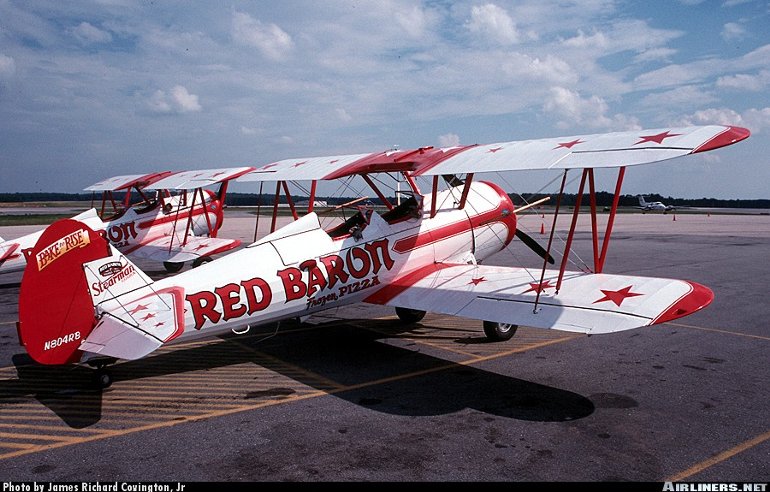Aircraft Technical Data
Boeing Stearman

| Details | |
| Country of Origin | United States of America |
| Type | Two seat sport, utility and agricultural biplane |
| History | The Boeing Stearman is perhaps the most widely known and recognised biplane in the USA, as it was that country's primary basic trainer throughout World War 2. This famous biplane began life as a design of the Stearman Division of United Aircraft (at that time United Aircraft also owned Boeing and United Airlines), which Boeing acquired as a wholly owned subsidiary in 1934. At the time of the takeover development on the X-70 training biplane was well advanced, and Stearman continued work on the type under Boeing ownership. The prototype of the Stearman Model 75, as the X70 became, flew for the first time in 1936. That year Stearman delivered the first production Model 35s, as the PT13, to the US Army Air Corps. That service immediately found the Lycoming R680 powered PT13 to be an ideal basic trainer, the airframe was rugged and forgiving, and the slow turning radial engine reliable and reasonably economical. America's entry into World War 2 brought with it massive requirements for pilot training and the US Army and Navy went on to buy thousands of PT13s and Continental engined PT17s and N2Ss. During the war almost all American pilots undertook basic training on the PT13 or PT17, and the type was exported to Canada (as the Kaydet), Britain and other nations. Apart from in Canada the Kaydet name was unofficially widely adopted for the type. Postwar, the Stearman's rugged construction and good low speed handling saw large numbers converted for agricultural spraying work. Many conversions involved replacing the Stearman's fabric covering with metal (to avoid problems with chemical contamination), while many were fitted with more powerful 335kW (450hp) P&W R985A61 radials. Today many hundred Stearmans are still flown in private hands, although its crop spraying days are mostly over. |
| Powerplants | One 170kW (225hp) Lycoming R680 nine cylinder radial piston engine driving a two blade fixed pitch propeller, or alternatively a 165kW (220hp) Continental W6706 or 170kW (225hp) Jacobs R7557 piston radial. Many later converted with a 335kW (450hp) Pratt & Whitney R985A61 radial piston engine. |
| Performance | Max cruising speed 200km/h (108kt), typical cruising speed range 148 to 170km/h (80 to 92kt). Initial rate of climb 1000ft/min. Service ceiling 11,200ft. Range with max fuel at 148km/h (80kt) cruising speed 605km (325nm). |
| Weights | Basic operating 940kg (2075lb), max takeoff 1275kg (2810lb), or max takeoff in ag configuration 2040kg (4500lb). |
| Dimensions | Wing span 9.80m (32ft 2in), length 7.62m (25ft 0in), height 2.79m (9ft 2in). Wing area 27.6m2 (297.4sq ft). |
| Capacity | Typical seating for two in tandem, or single pilot only when used for agricultural work. |
| Production | Total production 8584. Postwar more than 2100 were converted for agricultural spraying work. Several hundred fly with private owners. |
| Related Links | Boeing Stearman |
The backbone of this section is from the The International Directory of Civil Aircraft by Gerard Frawley and used with permission. To get your own copy of the book click here. |
|








